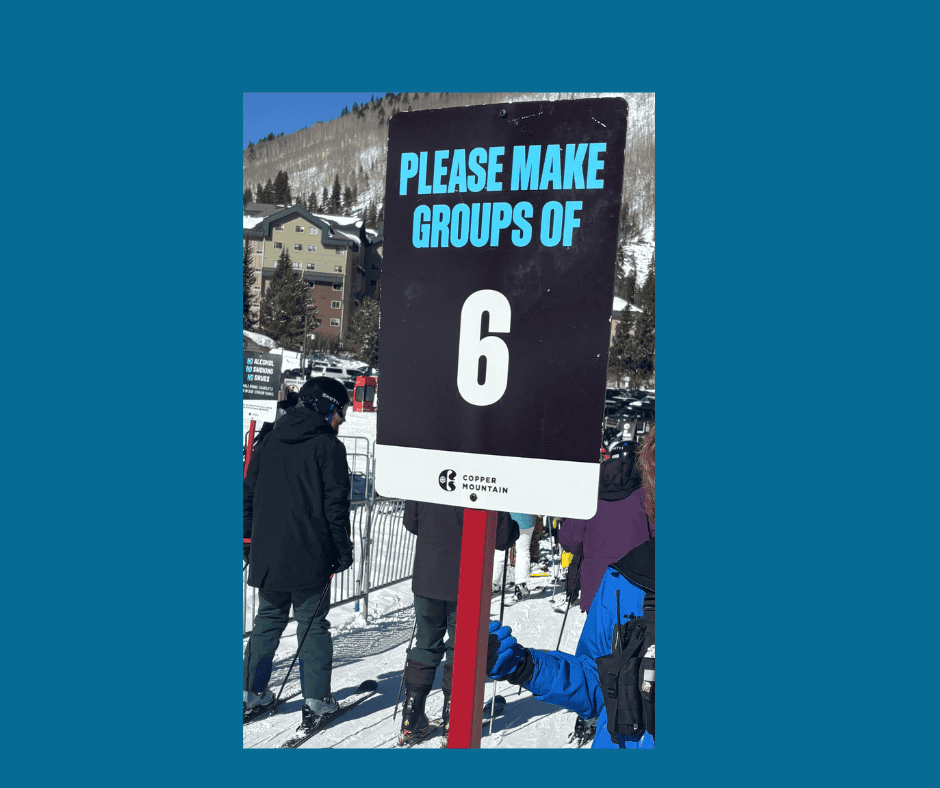It was a picture-perfect ski day—blue skies, fresh snow, and the crisp mountain air filling our lungs. As anyone who skis knows, lift lines have their own kind of social order.
To keep things moving smoothly, lift operators group skiers into sets—six at a time for this particular lift. It’s a system that works, creating efficiency and flow, ensuring everyone gets up the mountain faster.
That day, everything was working as expected. Groups of six moved forward, merging seamlessly.
Then, suddenly, at the very last moment—chaos.
A Breakdown in Social Order
Just as my friend and I reached the loading zone, the careful pattern of sixes dissolved. A lone skier, seemingly out of nowhere, had wedged herself into our line.
Instead of six, our group was suddenly seven—or maybe even eight—trying to board a lift built for six. It didn’t make sense. We looked ahead and saw an opening: just two people were waiting for the next chair, leaving space for exactly four more.
Perfect. Without hesitation, my friend and I did what skiers do all the time—we adjusted, following the lift operator’s instructions, and stepped forward to join them.
Confrontation on the Lift
That’s when everything shifted.
I was on the right edge, next to a woman I’d never met. As we lined up, she turned, locked eyes with me, and with sharp intensity asked, “What are you doing here?”
It was an odd question for the moment. Getting on the lift with you, I responded simply, caught off guard.
Then, suddenly, she exploded.
“I DIDN’T INVITE YOU ONTO THIS LIFT!” she screamed, her voice slicing through the crisp mountain air.
And then, in a move both subtle and forceful, she pressed her body against mine, pushing me to the very edge of the seat. The pressure was unrelenting—I was either going to sit half on the metal bar or risk getting hit in the head as the chair came around.
In a split-second decision, I jumped off to the side.
A Shift in Perspective
I dusted off the snow and took a deep breath. A few seconds later, I found myself on the next chair with a lovely family who had recently moved to Colorado from Israel.
The ride up was peaceful, even joyful, as we talked about their experience adjusting to life in the mountains. It was a stark contrast to the chaos that had just unfolded.
And that’s when the metaphor hit me.
That woman’s sheer fear—of what, I’ll never truly know—was so powerful that it disrupted everything around her.
The carefully constructed social order of the lift line collapsed as fear took hold, disrupting the natural flow of movement. Her fear turned into chaos, and she tried to pull us into it with her.
In another scenario, it could have worked. Her aggression could have triggered me, leading to an argument, more disruption, or even worse, an injury.
But fear only creates more fear. Chaos only breeds more chaos.
And in that moment, I had a choice: to get swept up in it, or to stop the cycle.
Reactive vs. Creative (Conscious) Leadership
This is the same choice leaders face every day.
When fear takes over, we react—grasping for control, resisting change, creating confusion instead of clarity. This is reactive leadership, driven by old patterns and survival instincts.
But when we shift to creative leadership, we pause, recognize fear for what it is, and choose a different response—one that moves us forward rather than keeping us stuck.
From Reactive to Creative Leadership
- From fear-driven decisions to possibility-driven choices
- From resisting change to adapting and innovating
- From controlling, blaming, or avoiding to engaging, connecting, and leading
- From reacting impulsively to responding intentionally
- From creating more fear and chaos to creating space for clarity, collaboration, and forward movement
The Power of Conscious Leadership
I was lucky that day. I saw her fear for what it was, and I let it go.
I moved on. I didn’t carry her chaos up the mountain with me.
And isn’t that exactly what’s happening in our world right now?
We see systems breaking down, people resisting structure, fear manifesting in unpredictable ways. When fear takes over, logic and order fall apart.
But the real question is: Who will stop the cycle?
We all have the power to break free from the pull of fear and chaos. The question is—will we?
Conscious leadership is the foundation that holds us steady in the storm.
In times of uncertainty, fear, and rapid change, it is the leaders who remain grounded in awareness, connection, and intentional action that create stability—not only for themselves but for those around them.
Conscious leaders hold space, weigh multiple perspectives, and stay present, following one step at a time.
They embrace a sense-and-respond approach rather than relying on outdated predict-and-control methods.
When we lead with consciousness, we stay present, sensing what is emerging and allowing the future to reveal itself.
A Final Reflection
Leadership is a series of choices—between fear and clarity, reaction and response, stagnation and progress. Every day, we encounter moments that test our ability to stay present and lead with intention.
So ask yourself:
- Where are you allowing fear to dictate your leadership?
- How can you shift toward a more creative, conscious approach?
- What would change if you embraced uncertainty as an opportunity rather than a threat?
The way forward is always unfolding. The question is: Are you willing to lead with presence, courage, and awareness?

